Search Result
Results for "
intoxication
" in MedChemExpress (MCE) Product Catalog:
5
Isotope-Labeled Compounds
| Cat. No. |
Product Name |
Target |
Research Areas |
Chemical Structure |
-
- HY-115363
-
|
|
Others
|
Cardiovascular Disease
Metabolic Disease
|
|
Curcumenone is a major constituent of the plants of medicinally important genus of Curcuma. Curcumenone, a caraborane type sesquiterpene has been reported to be a vasorelaxant, hepatoprotective and an effective inhibitor of intoxication .
|
-
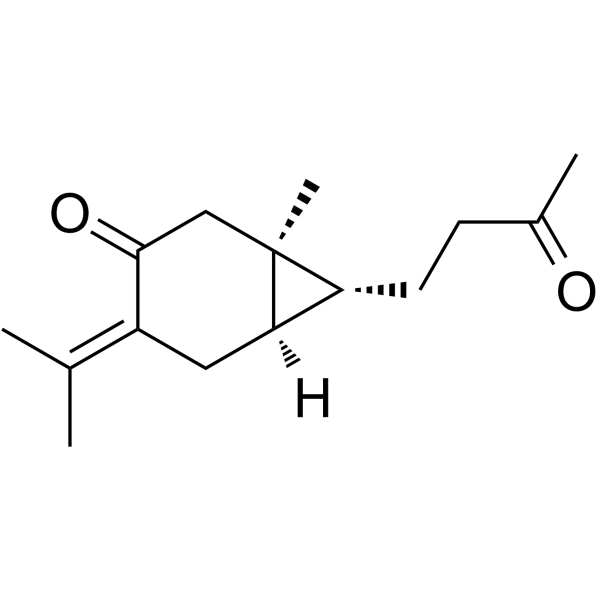
-
- HY-P1975
-
|
Basifungin
|
Fungal
Parasite
|
Infection
Inflammation/Immunology
|
|
Aureobasidin A (Basifungin) is a cyclic peptide antibiotic with oral activity. Aureobasidin A is an inhibitor of inositol phosphorylated ceramide synthetase AUR1. Aureobasidin A has antifungal and antiparasitic activity .
|
-

-
- HY-148176
-
-
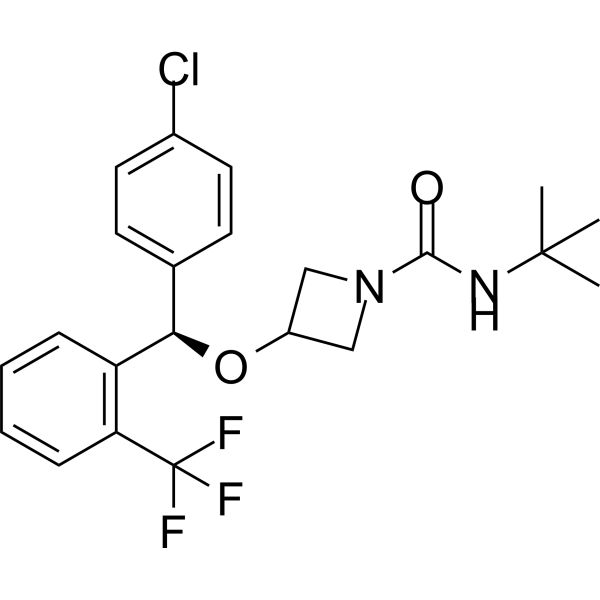
-
- HY-128370
-
|
Ca-DTPA trisodium salt hydrate
|
CMV
|
Infection
|
|
Calcium trinatrium diethylenetriaminepentaacetic acid hydrate (Ca-DTPA trisodium salt hydrate) is a metal chelator and a useful antidote (such as acute cadmium intoxication). Diethylenetriaminepentaacetic acid calcium trisodium salt hydrate is a nontoxic inhibitor of CMV replication .
|
-
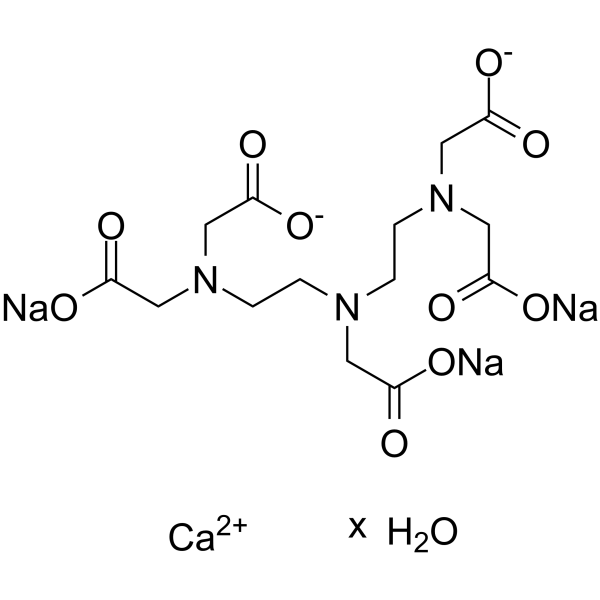
-
- HY-146959
-
-
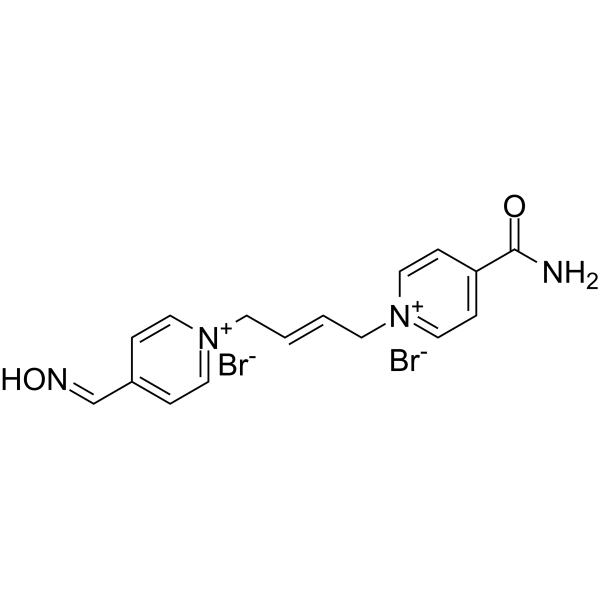
-
- HY-111054
-
|
MDCG
|
Endogenous Metabolite
|
Inflammation/Immunology
|
|
N-methyl-N-dithiocarboxyglucamine (MDCG) mobilizes and promotes excretion of metallothione-bound 109Cd. N-methyl-N-dithiocarboxyglucamine shows effects on acute and chronic Cd intoxication .
|
-
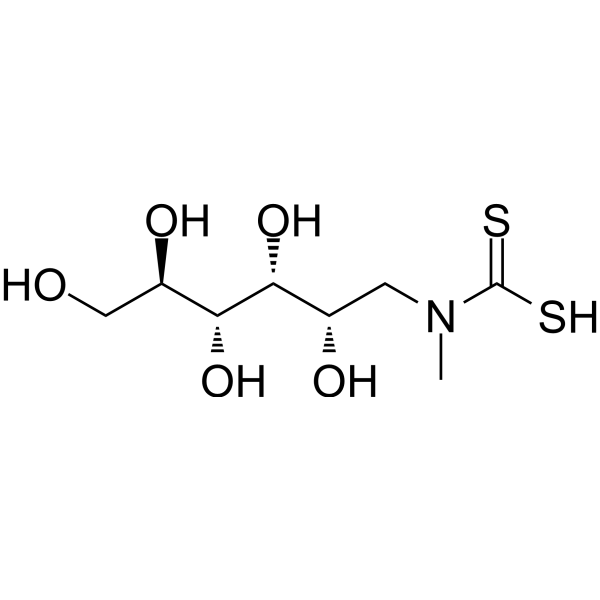
-
- HY-125559
-
|
|
Others
|
Cardiovascular Disease
|
|
Jesaconitine is a toxic alkaloid. Jesaconitine can be derived from Aconitum. Jesaconitine is one of the major metabolites that can be detected in the blood of the right atrium after aconitum poisoning. Various types of arrhythimia are characteristic in aconitine intoxication .
|
-
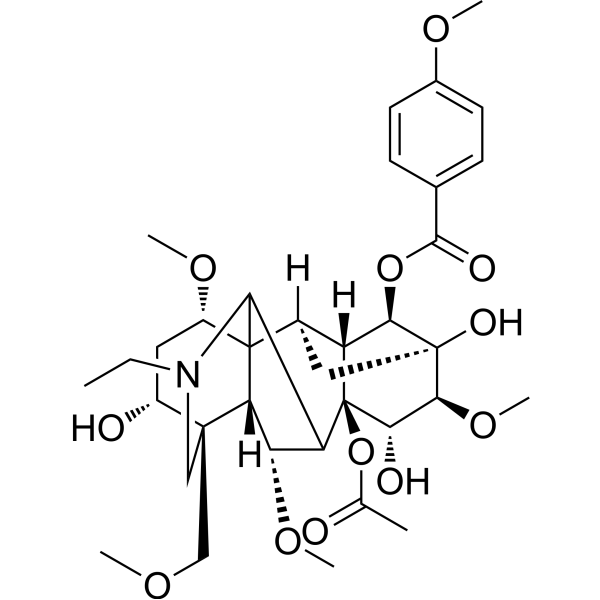
-
- HY-B0151S
-
|
3β-Hydroxy-5-pregnen-20-one-d4
|
Cannabinoid Receptor
TRP Channel
Endogenous Metabolite
Autophagy
|
Neurological Disease
|
|
Pregnenolone-d4 is the deuterium labeled Pregnenolone. Pregnenolone (3β-Hydroxy-5-pregnen-20-one) is a powerful neurosteroid, the main precursor of various steroid hormones including steroid ketones. Pregnenolone acts as a signaling-specific inhibitor of cannabinoid CB1 receptor, inhibits the effects of tetrahydrocannabinol (THC) that are mediated by the CB1 receptors. Pregnenolone can protect the brain from cannabis intoxication[1][2]. Pregnenolone is also a TRPM3 channel activator, and also can weakly activate TRPM1 channels[3].
|
-

-
- HY-B0151S2
-
|
3β-Hydroxy-5-pregnen-20-one-d4-1
|
Cannabinoid Receptor
TRP Channel
Endogenous Metabolite
Autophagy
|
Neurological Disease
|
|
Pregnenolone-d4-1 is the deuterium labeled Pregnenolone. Pregnenolone (3β-Hydroxy-5-pregnen-20-one) is a powerful neurosteroid, the main precursor of various steroid hormones including steroid ketones. Pregnenolone acts as a signaling-specific inhibitor of cannabinoid CB1 receptor, inhibits the effects of tetrahydrocannabinol (THC) that are mediated by the CB1 receptors. Pregnenolone can protect the brain from cannabis intoxication[1][2]. Pregnenolone is also a TRPM3 channel activator, and also can weakly activate TRPM1 channels[3].
|
-

-
- HY-W013214
-
|
|
Endogenous Metabolite
|
Others
|
|
Ethyl arachidonate is a lipophilic esterified form of arachidonic acid (AA) and can be added into dietary regimens or fed to cultured cells as a source of exogenous arachidonate. Ethyl arachidonate is the main species of fatty acid ethyl esters (FAEE) in brain of alcohol-intoxicated subjects .
|
-

-
- HY-110189S1
-
|
3β-Hydroxy-5-pregnen-20-one monosulfate-d4 (sodium)
|
Cannabinoid Receptor
TRP Channel
Endogenous Metabolite
Autophagy
|
|
|
Pregnenolone monosulfate-d4 (sodium) is the deuterium labeled Pregnenolone monosulfate. Pregnenolone monosulfate sodium (3β-Hydroxy-5-pregnen-20-one monosulfate sodium) is a powerful neurosteroid, the main precursor of various steroid hormones including steroid ketones. Pregnenolone monosulfate sodium acts as a signaling-specific inhibitor of cannabinoid CB1 receptor, inhibits the effects of tetrahydrocannabinol (THC) that are mediated by the CB1 receptors. Pregnenolone monosulfate sodium can protect the brain from cannabis intoxication[1][2]. Pregnenolone monosulfate sodium is also a TRPM3 channel activator, and also can weakly activate TRPM1 channels[3].
|
-

-
- HY-136436
-
-

-
- HY-110189S
-
|
3β-Hydroxy-5-pregnen-20-one monosulfate (sodium)-13C2,d2
|
Cannabinoid Receptor
TRP Channel
Endogenous Metabolite
Autophagy
|
Neurological Disease
|
|
Pregnenolone monosulfate (sodium)- 13C2,d2 is the 13C- and deuterium labeled Pregnenolone monosulfate sodium. Pregnenolone monosulfate sodium (3β-Hydroxy-5-pregnen-20-one monosulfate sodium) is a powerful neurosteroid, the main precursor of various steroid hormones including steroid ketones. Pregnenolone monosulfate sodium salt acts as a signaling-specific inhibitor of cannabinoid CB1 receptor, inhibits the effects of tetrahydrocannabinol (THC) that are mediated by the CB1 receptors. Pregnenolone monosulfate sodium salt can protect the brain from cannabis intoxication[1][2]. Pregnenolone monosulfate sodium salt is also a TRPM3 channel activator, and also can weakly activate TRPM1 channels[3].
|
-

-
- HY-14946
-
|
3,4-Diaminopyridine
|
Potassium Channel
|
Neurological Disease
|
|
Amifampridine (3,4-Diaminopyridine) is an orally active, potent and cell permeable voltage-gated potassium (Kv) channel blocker (PCB). Amifampridine is efficacy in the reversal of BoNT/A (HY-P79153) intoxication. Amifampridine increases transmitter release from neuromuscular junctions (NMJs). Amifampridine can be used for Lambert-Eaton myasthenic syndrome (LEMS) research .
|
-
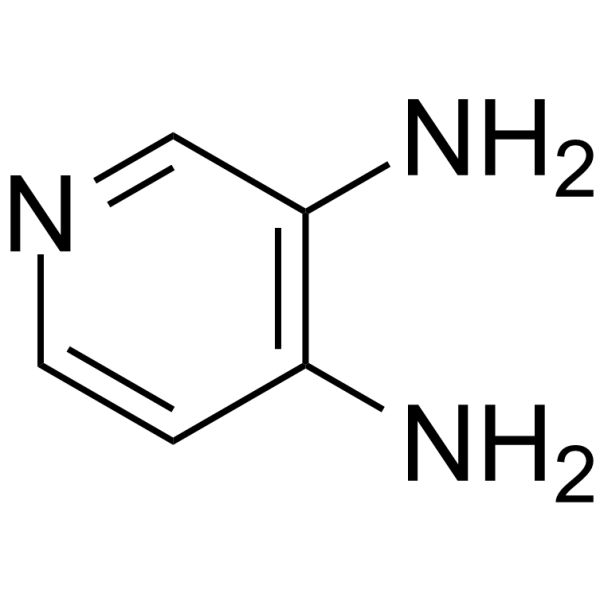
-
- HY-14946A
-
|
3,4-Diaminopyridine phosphate
|
Potassium Channel
|
Neurological Disease
|
|
Amifampridine (3,4-Diaminopyridine) phosphate is an orally active, potent and cell permeable voltage-gated potassium (Kv) channel blocker (PCB). Amifampridine phosphate is efficacy in the reversal of BoNT/A (HY-P79153) intoxication. Amifampridine phosphate increases transmitter release from neuromuscular junctions (NMJs). Amifampridine phosphate can be used for Lambert-Eaton myasthenic syndrome (LEMS) research .
|
-
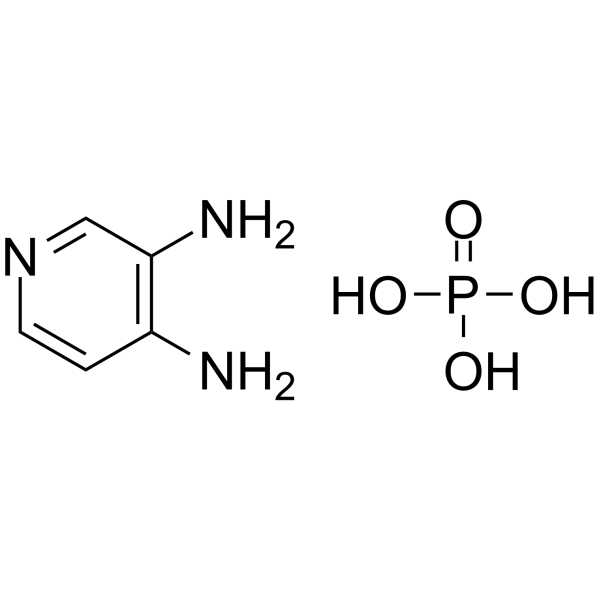
-
- HY-105790
-
|
Pipethanate
|
Cholinesterase (ChE)
|
Others
|
|
Piperilate (Pipethanate) is one of the mixtures of hetrazepine derivative PAF antagonists with anticholinergics, can be used for bronchial asthma research. Piperilate also causes hypotension and rescues mice poisoned by the organophosphates .
|
-
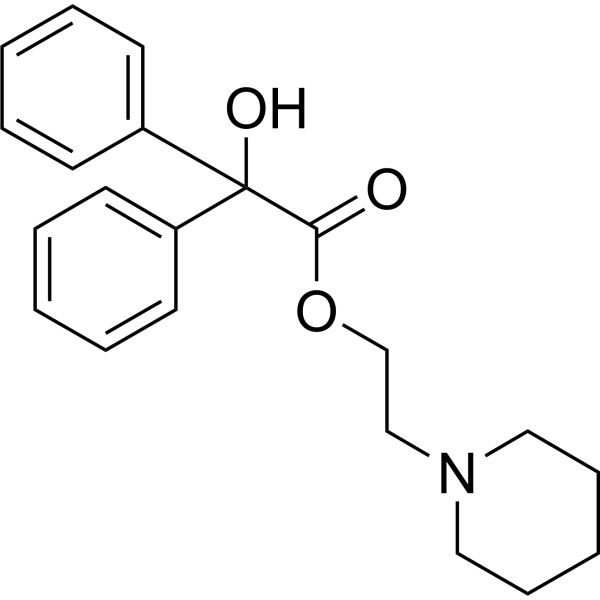
-
- HY-42682
-
|
D-Galactosamine hydrochloride
|
Others
|
Inflammation/Immunology
|
|
D(+)-Galactosamine (D-Galactosamine) hydrochloride, which is an established experimental toxin, primarily causes liver injury by the generation of free radicals and depletion of UTP nucleotides. D(+)-Galactosamine hydrochloride intoxication also induces renal dysfunction thus, renal failure is often associated with the end-stage of the liver damage. Lipopolysaccharide/D(+)-Galactosamine-induced acute liver injury is a known animal model of fulminant hepatic failure .
|
-
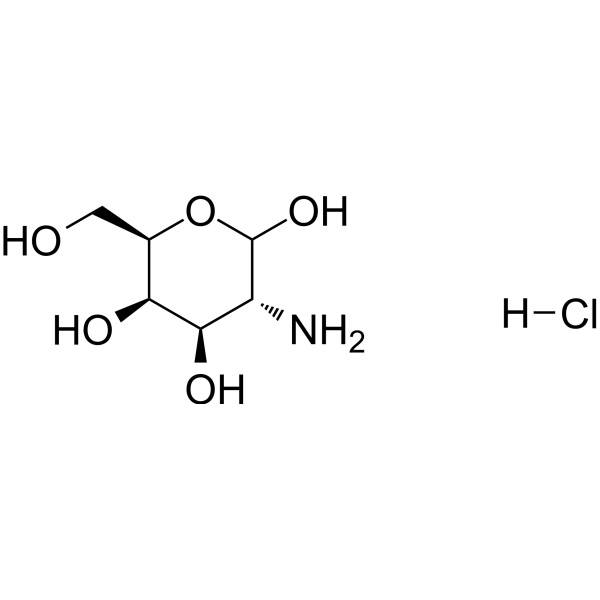
-
- HY-100979
-
|
HDMPPA
|
|
|
|
W-84 (dibromide) is a potent allosteric modulator of M2-cholinoceptors, which retards [ 3H]N-methylscopolamine dissociation. W-84 dibromide can stabilize cholinergic antagonist-receptor complexes. W-84 (dibromide) is a non-competitive muscarinic acetylcholine receptors antagonist with allosteric effects. W-84 (dibromide) protects over additively against an organophosphate-intoxication when applied in combination with atropine .
|
-

-
- HY-B0151
-
|
3β-Hydroxy-5-pregnen-20-one
|
Cannabinoid Receptor
TRP Channel
Endogenous Metabolite
Autophagy
|
Neurological Disease
|
|
Pregnenolone (3β-Hydroxy-5-pregnen-20-one) is a powerful neurosteroid, the main precursor of various steroid hormones including steroid ketones. Pregnenolone acts as a signaling-specific inhibitor of cannabinoid CB1 receptor, inhibits the effects of tetrahydrocannabinol (THC) that are mediated by the CB1 receptors. Pregnenolone can protect the brain from cannabis intoxication . Pregnenolone is also a TRPM3 channel activator, and also can weakly activate TRPM1 channels .
|
-
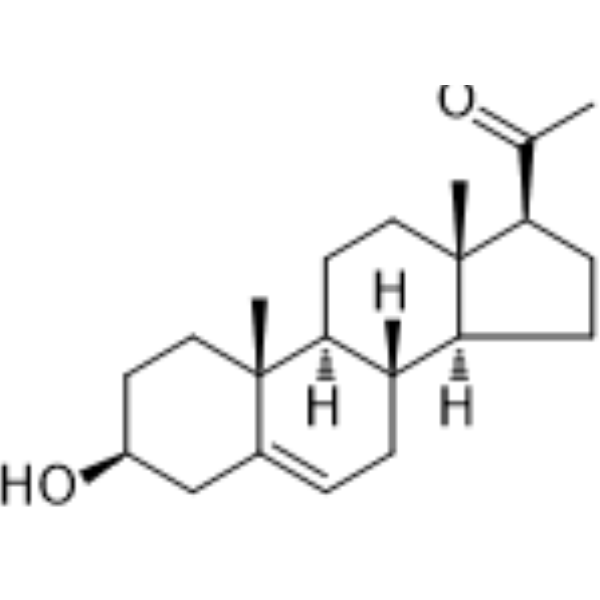
-
- HY-N9182
-
|
Physalien
|
Adiponectin Receptor
P2X Receptor
Autophagy
|
Inflammation/Immunology
|
|
Zeaxanthin dipalmitate (Physalien) is a wolfberry-derived carotenoid, has anti-inflammatory and anti-oxidative stress effects. Zeaxanthin dipalmitate directly interact with p2X7 receptor (Kd=81.2 nM) and adiponectin receptor 1 (AdipoR1; Kd=533 nM) in a positive dose-dependent manner. Zeaxanthin dipalmitate restores mitochondrial autophagy functions suppressed by ethanol intoxication. Zeaxanthin dipalmitate can be used in the research of alcoholic fatty liver disease (AFLD) and retinitis pigmentosa (RP) .
|
-

-
- HY-B1739
-
|
3β-Hydroxy-5-pregnen-20-one monosulfate
|
|
|
|
Pregnenolone monosulfate (3β-Hydroxy-5-pregnen-20-one monosulfate) is a powerful neurosteroid, the main precursor of various steroid hormones including steroid ketones. Pregnenolone monosulfate acts as a signaling-specific inhibitor of cannabinoid CB1 receptor, inhibits the effects of tetrahydrocannabinol (THC) that are mediated by the CB1 receptors. Pregnenolone monosulfate can protect the brain from cannabis intoxication . Pregnenolone monosulfate is also a TRPM3 channel activator, and also can weakly activate TRPM1 channels .
|
-
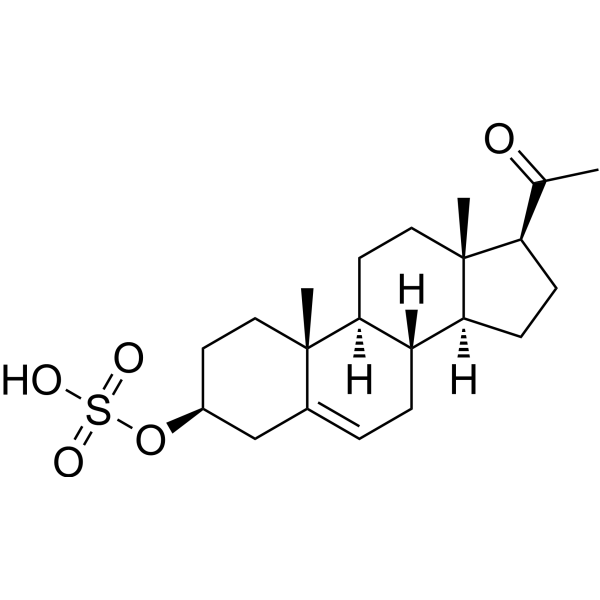
-
- HY-110189
-
|
3β-Hydroxy-5-pregnen-20-one monosulfate sodium
|
Cannabinoid Receptor
TRP Channel
Endogenous Metabolite
Autophagy
|
Neurological Disease
|
|
Pregnenolone monosulfate sodium (3β-Hydroxy-5-pregnen-20-one monosulfate sodium) is a powerful neurosteroid, the main precursor of various steroid hormones including steroid ketones. Pregnenolone monosulfate sodium acts as a signaling-specific inhibitor of cannabinoid CB1 receptor, inhibits the effects of tetrahydrocannabinol (THC) that are mediated by the CB1 receptors. Pregnenolone monosulfate sodium can protect the brain from cannabis intoxication . Pregnenolone monosulfate sodium is also a TRPM3 channel activator, and also can weakly activate TRPM1 channels .
|
-
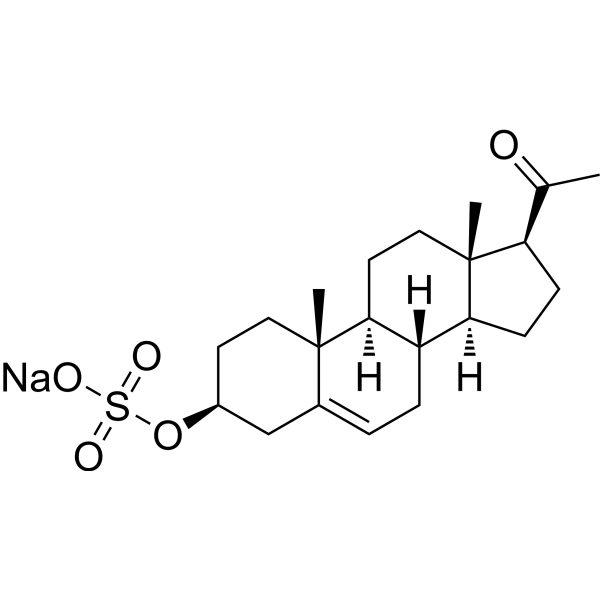
-
- HY-B0151S1
-
|
3β-Hydroxy-5-pregnen-20-one-13C2,d2
|
Isotope-Labeled Compounds
Autophagy
Cannabinoid Receptor
Endogenous Metabolite
TRP Channel
|
Neurological Disease
|
|
Pregnenolone- 13C2,d2 is the deuterium and 13C labeled Pregnenolone (HY-B0151). Pregnenolone is a powerful neurosteroid, the main precursor of various steroid hormones including steroid ketones. Pregnenolone acts as a signaling-specific inhibitor of cannabinoid CB1 receptor, inhibits the effects of tetrahydrocannabinol (THC) that are mediated by the CB1 receptors. Pregnenolone can protect the brain from cannabis intoxication. Pregnenolone is also a TRPM3 channel activator, and also can weakly activate TRPM1 channels[1][2][3][4].
|
-

-
- HY-B0151R
-
|
3β-Hydroxy-5-pregnen-20-one (Standard)
|
Cannabinoid Receptor
TRP Channel
Endogenous Metabolite
Autophagy
|
Neurological Disease
|
|
Pregnenolone (Standard) is the analytical standard of Pregnenolone. This product is intended for research and analytical applications. Pregnenolone (3β-Hydroxy-5-pregnen-20-one) is a powerful neurosteroid, the main precursor of various steroid hormones including steroid ketones. Pregnenolone acts as a signaling-specific inhibitor of cannabinoid CB1 receptor, inhibits the effects of tetrahydrocannabinol (THC) that are mediated by the CB1 receptors. Pregnenolone can protect the brain from cannabis intoxication . Pregnenolone is also a TRPM3 channel activator, and also can weakly activate TRPM1 channels .
|
-
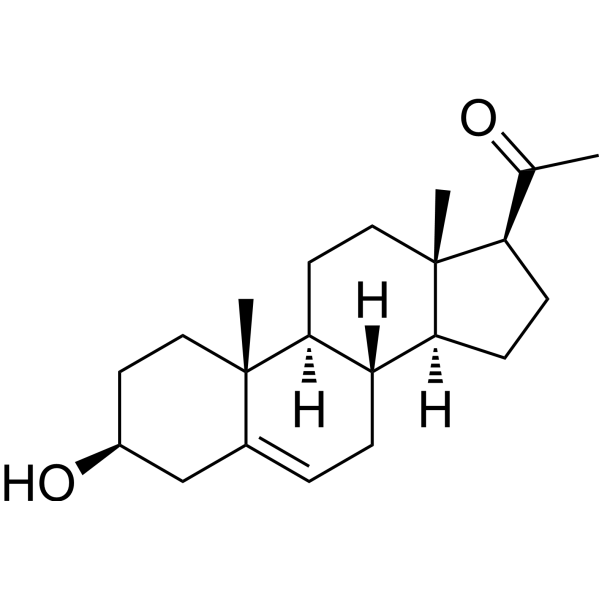
| Cat. No. |
Product Name |
Target |
Research Area |
-
- HY-P1975
-
|
Basifungin
|
Fungal
Parasite
|
Infection
Inflammation/Immunology
|
|
Aureobasidin A (Basifungin) is a cyclic peptide antibiotic with oral activity. Aureobasidin A is an inhibitor of inositol phosphorylated ceramide synthetase AUR1. Aureobasidin A has antifungal and antiparasitic activity .
|
| Cat. No. |
Product Name |
Target |
Research Area |
-
- HY-P9932
-
|
ETI 204
|
Inhibitory Antibodies
|
Infection
|
|
Obiltoxaximab is a potent anti-protective antigen (PA) monoclonal antibody. Obiltoxaximab plays a central role in anthrax toxin assembly and target cell intoxication. Obiltoxaximab can be used in animal‐to‐human dose translation for research of inhalational anthrax .
|
| Cat. No. |
Product Name |
Category |
Target |
Chemical Structure |
| Cat. No. |
Product Name |
Chemical Structure |
-
- HY-B0151S
-
|
|
|
Pregnenolone-d4 is the deuterium labeled Pregnenolone. Pregnenolone (3β-Hydroxy-5-pregnen-20-one) is a powerful neurosteroid, the main precursor of various steroid hormones including steroid ketones. Pregnenolone acts as a signaling-specific inhibitor of cannabinoid CB1 receptor, inhibits the effects of tetrahydrocannabinol (THC) that are mediated by the CB1 receptors. Pregnenolone can protect the brain from cannabis intoxication[1][2]. Pregnenolone is also a TRPM3 channel activator, and also can weakly activate TRPM1 channels[3].
|
-

-
- HY-B0151S2
-
|
|
|
Pregnenolone-d4-1 is the deuterium labeled Pregnenolone. Pregnenolone (3β-Hydroxy-5-pregnen-20-one) is a powerful neurosteroid, the main precursor of various steroid hormones including steroid ketones. Pregnenolone acts as a signaling-specific inhibitor of cannabinoid CB1 receptor, inhibits the effects of tetrahydrocannabinol (THC) that are mediated by the CB1 receptors. Pregnenolone can protect the brain from cannabis intoxication[1][2]. Pregnenolone is also a TRPM3 channel activator, and also can weakly activate TRPM1 channels[3].
|
-

-
- HY-110189S1
-
|
|
|
Pregnenolone monosulfate-d4 (sodium) is the deuterium labeled Pregnenolone monosulfate. Pregnenolone monosulfate sodium (3β-Hydroxy-5-pregnen-20-one monosulfate sodium) is a powerful neurosteroid, the main precursor of various steroid hormones including steroid ketones. Pregnenolone monosulfate sodium acts as a signaling-specific inhibitor of cannabinoid CB1 receptor, inhibits the effects of tetrahydrocannabinol (THC) that are mediated by the CB1 receptors. Pregnenolone monosulfate sodium can protect the brain from cannabis intoxication[1][2]. Pregnenolone monosulfate sodium is also a TRPM3 channel activator, and also can weakly activate TRPM1 channels[3].
|
-

-
- HY-110189S
-
|
|
|
Pregnenolone monosulfate (sodium)- 13C2,d2 is the 13C- and deuterium labeled Pregnenolone monosulfate sodium. Pregnenolone monosulfate sodium (3β-Hydroxy-5-pregnen-20-one monosulfate sodium) is a powerful neurosteroid, the main precursor of various steroid hormones including steroid ketones. Pregnenolone monosulfate sodium salt acts as a signaling-specific inhibitor of cannabinoid CB1 receptor, inhibits the effects of tetrahydrocannabinol (THC) that are mediated by the CB1 receptors. Pregnenolone monosulfate sodium salt can protect the brain from cannabis intoxication[1][2]. Pregnenolone monosulfate sodium salt is also a TRPM3 channel activator, and also can weakly activate TRPM1 channels[3].
|
-

-
- HY-B0151S1
-
|
|
|
Pregnenolone- 13C2,d2 is the deuterium and 13C labeled Pregnenolone (HY-B0151). Pregnenolone is a powerful neurosteroid, the main precursor of various steroid hormones including steroid ketones. Pregnenolone acts as a signaling-specific inhibitor of cannabinoid CB1 receptor, inhibits the effects of tetrahydrocannabinol (THC) that are mediated by the CB1 receptors. Pregnenolone can protect the brain from cannabis intoxication. Pregnenolone is also a TRPM3 channel activator, and also can weakly activate TRPM1 channels[1][2][3][4].
|
-

Your information is safe with us. * Required Fields.
Inquiry Information
- Product Name:
- Cat. No.:
- Quantity:
- MCE Japan Authorized Agent:
































